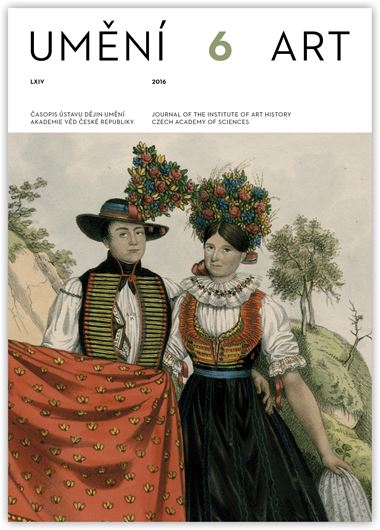Ivo Hlobil
Karl IV. ohne Kaiserkrone im Historischen Museum der Stadt Wien
The medieval art exhibit in the Vienna Museum has a set of six monumental stone sculptures from St Stephen’s Cathedral. They depict Rudolf IV, Duke of Austria (1358–1365), his wife Catherine of Bohemia, and their parents. This article looks at the sculpture of Charles IV, who was the most important ruler to sit on the Czech throne. This sculpture in Vienna is not mentioned on the lists that have thus far been made of the portraits of Charles IV. These sculptures have already received considerable attention from Austrian art history, and Antje Kosegarten in 1966 who formulated the generally accepted findings on them. No one, however, has as yet taken note of the fact that the features identifying the crown as the imperial – the arch and the cross above the frontal lily – vanished at some time from the sculpture of Charles IV. That they used to be there is proven by photographs published before 1962. In the 14th century, the arch and the cross on the crowns of emperors and kings in the empire signified the rift between Charles IV and his son-in-law, Rudolf IV. The aspiring Rudolf was to receive the imperial title only in the Austrian lands, seated on a horse, wearing the archducal hat. The hat of Rudolf IV bearing these symbols has not survived, but its appearance in shown in detail in the painted portrait of Rudolf in the Museum of the Archdiocese of Vienna. The question to ask then is why the imperial crown of Charles IV on the sculpture in the Museum of History lost its arch and cross. Neither the literature nor the relevant sources make any mention of this. The details in question no doubt seemed vulgarly oversized to the aesthetic sensibilities of the 20th century. Perhaps the opinion held saw that the cross was not originally a part of the sculpture, that it had been added to the crown by boring holes into the front of the imperial mitre. Nevertheless, it is most likely that what led to the loss of these features from the imperial crown of Charles IV was that the arch was damaged and incomplete in shape. And restoring it was out of the question – in the spirit of the principles put forth by Alois Reigl, imitation versions of architectural and artistic accessories should not be created, especially in the case of the most important works, which the sculpture of the Charles IV in Vienna in many respects is. Even today we would not proceed otherwise.
Full-text in the Digital Library of the Czech Academy of Sciences:
https://kramerius.lib.cas.cz/uuid/uuid:11f53a06-454b-488a-8ffb-c5576cd216a2
< back

